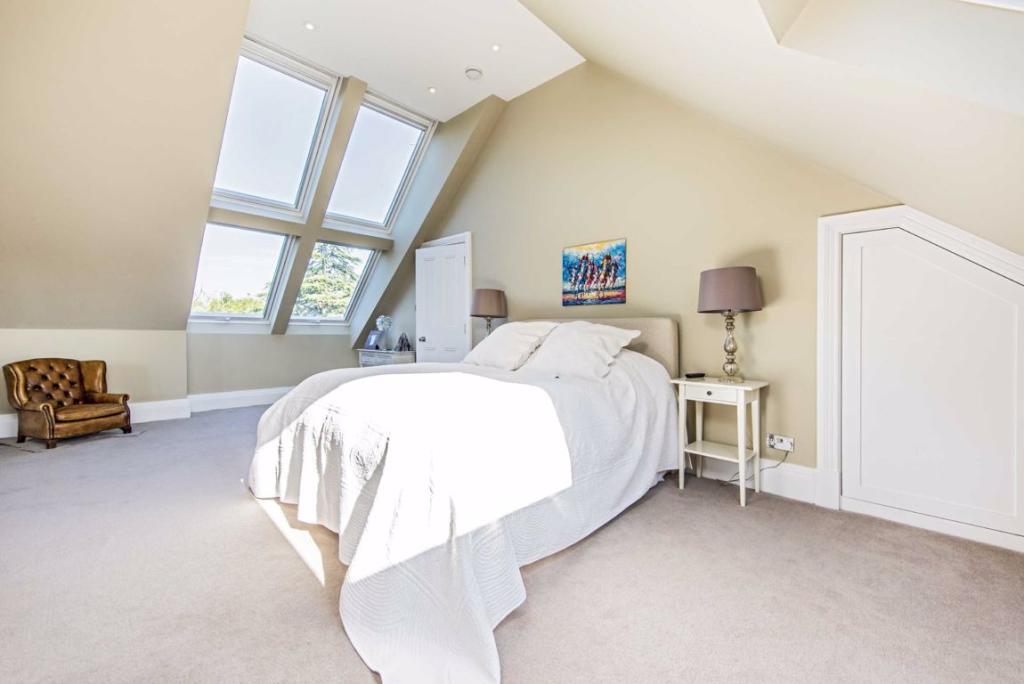A Stepwise Guide to Loft Conversion for Wimbledon Property
July 7, 2025

Feeling short of space in your old House in Wimbledon? That is entirely natural because as your family grows, you need more space for your family members and to store furniture and other essential items.
With a loft room, you can add space to your old Wimbledon house. People typically opt for a loft conversion to utilise the space as an additional bedroom, a storage room, a study, or a home office. The loft conversion process may seem daunting, but with a step-by-step guide, it becomes easier to understand.
So, let's begin our discussion without further delay.
Step 1: Initial survey
After you decide to convert the loft space into a bedroom or study, contact a loft conversion specialist in Wimbledon. The contractor will visit your site and inspect the building structure, roof structure, headspace and other necessary things. This information will help you decide if a loft conversion is suitable for your building.
It is better to hire a local loft conversion specialist, as they are familiar with the relevant regulations to follow. Moreover, they have a fair understanding of the building structure and its conditions.
Step 2: Loft Conversion- the right type for you
At the next step, the contractor will discuss with you the most suitable type of loft conversion for your property. For example, you might want a master bedroom or a children's bedroom. Then, a dormer loft conversion is the best idea. For a home office or study, a Velux is ideal, while for a bedroom and study, an L-shaped dormer loft conversion might be the best option.
The contractor will help you decide the best option for you. You have to maintain a balance between the structural capability of the building and your needs.
Step 3: Planning permission and building regulations in Wimbledon
At this step, you need to communicate with the Wimbledon loft conversion specialist to know the local rules and regulations that you need to follow for a loft conversion. For example, most loft conversions in the area are considered to be permitted development. However, a dormer loft conversion might need planning permission.
Additionally, you might have to deal with a Party Wall Agreement if you are sharing a wall with the neighbouring party. For suggestions and advice, consult the loft conversion contractor. If he is experienced in the field, he will be able to guide you through the process.
Step 4: Design and Architectural Drawings
Before you start the construction process, design the complete layout of the loft conversion. With technical drawing, define how the space would look and where the bed or study table would be placed.
With a detailed guide to the structural design, the workers will also find completing the loft conversion easier.
Step 5: Structural planning and engineering
At this stage, the engineers draw out a map of the place to be converted into something usable. The structural details of the space will ensure that the engineers get the construction process right to the core.
They will calculate the placement of the steel beams or construct a load-bearing wall. Such technical details will keep the place intact even after a heavy rain or storm. During the process, ensure compliance with the UK's structural guidance rules and regulations for ultimate safety and security. Moreover, follow any additional guidance from the contractor.
Step 6: Project timeline and expectations
At this stage, ask the contractor to give you a general timeline for the project. A general timeline by the contractor will motivate workers to work to their maximum capacity. At the same time, you get to use the place as soon as possible.
Ask your contractor to break down the work into phases and provide a timeline for each phase. The further breakdown of the work will make it easier for the worker to complete smoothly.
Step 7: Interior decorations and finishing touches
Finally, decide on the interior design of the loft space. Discuss with the contractor what would be a suitable flooring option, lighting, or wall colour. If you are using the space as a study, install warm lights; if you plan to use it as a bedroom, use low lights for a relaxing atmosphere.
Carefully design the interior, as it adds value to the loft room.
Conclusion
A loft conversion may involve several steps, but carefully addressing them makes it easier for you to complete the work. Additionally, it is crucial to hire a reliable and expert loft conversion specialist.
Contact us at Loft Conversion Wimbledon for professional loft conversion services.